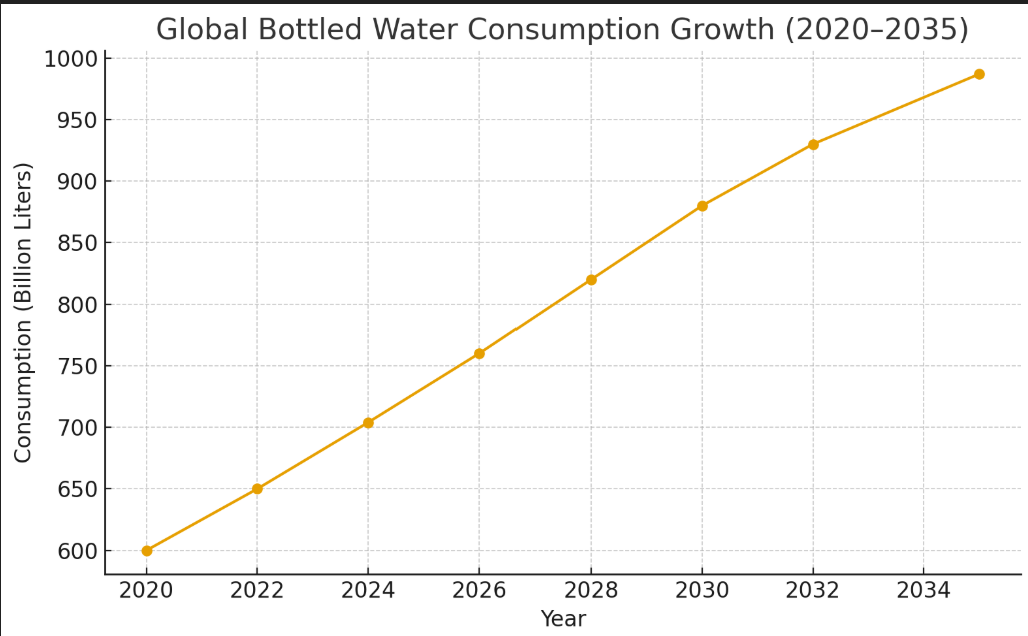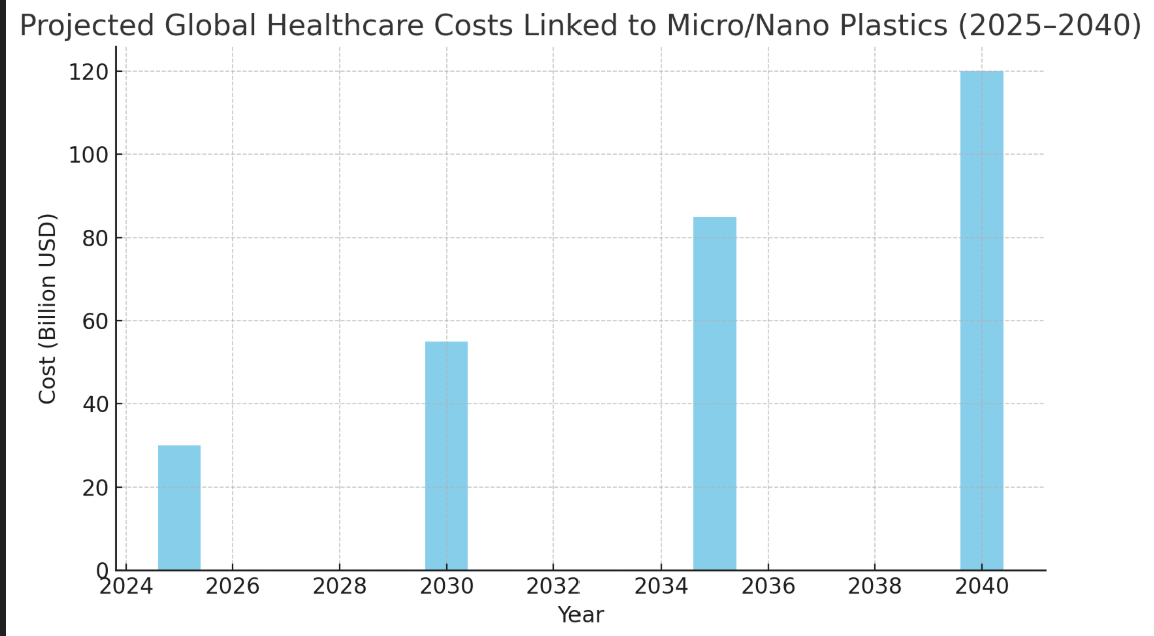Bottled Water, Heat, and Nano-Plastics: Hidden Long-Term Risks
Introduction
Bottled water has become a global staple due to concerns over tap water safety, convenience while traveling, and its relatively affordable price. According to the International Bottled Water Association (IBWA), global consumption is growing at over 6% annually. However, long-term reliance on bottled water poses serious health and environmental risks, especially when bottles are exposed to heat and direct sunlight
When stored improperly, plastic bottles release microplastics and nanoplastics into the water, as well as harmful chemicals like bisphenol A (BPA) and phthalates. Over time, these substances can disrupt hormones, increase cancer risk, and contribute to metabolic and cardiovascular diseases
Risks of Heat and Sunlight Exposure
- Nanoplastic Release: Studies by Columbia University (2024) found that a liter of bottled water may contain over 240,000 plastic particles, with higher levels in bottles exposed to direct sunlight.
- Chemical Leaching: Heat accelerates the release of BPA, which is linked to reproductive and endocrine disorders.
- Storage Conditions: In many regions, bottled water is often transported and stored under the sun, raising the risk of contamination before it reaches consumers.
Growing Dependence on Bottled Water
The demand for bottled water is rising globally due to:
- Declining trust in municipal tap water quality (particularly in Asia and Africa).
- Increased urbanization and mobility.
- Affordability relative to other packaged beverages.
Chart 1: Global Bottled Water Consumption Growth (2020–2035)
(Data Source: IBWA, Statista, WHO)

This chart shows that bottled water demand is projected to nearly double by 2035, with Asia-Pacific and Africa leading growth due to poor tap water infrastructure.
Health Costs of Nano-Plastics Exposure
The ingestion of micro- and nano-plastics is a silent, cumulative health risk. While short-term symptoms may not be obvious, research links long-term exposure to:
- Cardiovascular disease (nanoplastics found in arteries).
- Infertility and reproductive issues.
- Metabolic disorders such as obesity and diabetes.
Chart 2: Projected Global Healthcare Costs Linked to Micro/Nano Plastics (2025–2040)
(Data Source: OECD, Lancet Planetary Health)

The chart highlights a sharp increase in healthcare costs globally, particularly in middle-income countries, as diseases linked to plastic exposure rise over the next two decades.
Government Actions and Industry Responses
Governments and regulators are beginning to act to reduce risks:
- Eco-Friendly Packaging: Replacing plastic shrink-wrap with paper or cardboard for bottled water cartons.
- Shaded Storage & Transportation Rules: Preventing bottles from being left under direct sunlight.
- Expiry Date Enforcement: Bottled water now often carries strict expiry labeling to reduce long-term plastic leaching.
- Certification Standards: More rigorous testing and monitoring of bottled water quality.
Some companies are also investing in biodegradable plastics and recyclable glass alternatives, though scaling remains limited.
Conclusion
Bottled water is a growing necessity, but its hidden risks—from nanoplastics to chemical leaching—could translate into serious health costs within the next 10–20 years. Governments, suppliers, and consumers must take proactive steps, from safer packaging and shaded storage to policy-driven quality standards. Without intervention, the cost of convenience today may become a global health crisis tomorrow.
Sources:
- IndexBox – Bottled Water World Market Overview (2024)
- NIH – Plastic Particles in Bottled Water
- NIST – Environmental Factors in Microplastic Generation
- ACS Publications – Environmental Science & Technology
- PubMed – Research Database
- Mordor Intelligence – UAE Bottled Water Market
- Food Navigator – Nanoplastics in Bottled Water
- SAGE Journals – Health Impacts of Microplastics